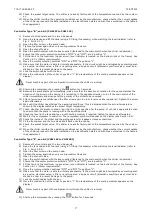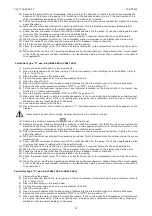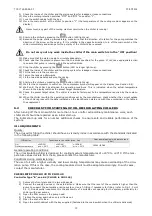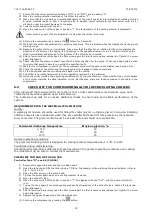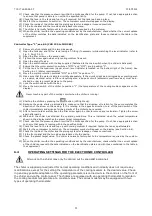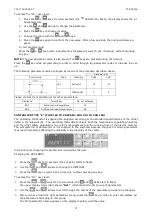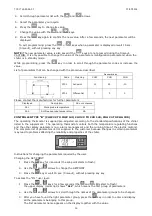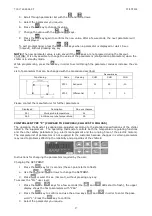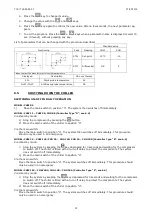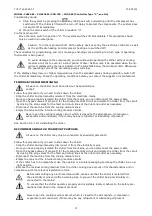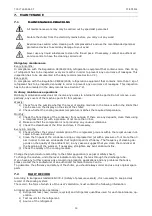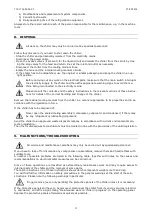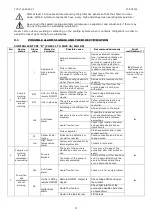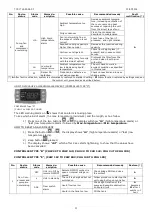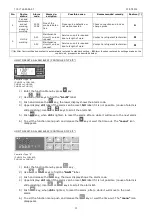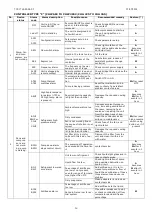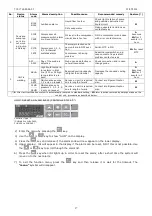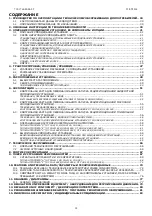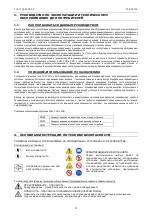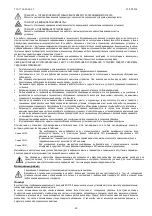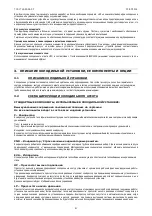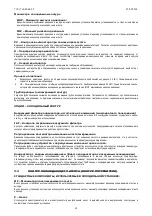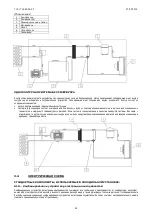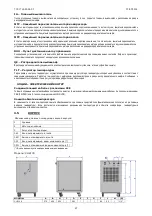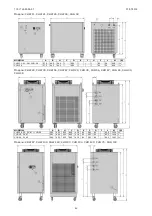
710.1760.00.04-05
22/05/2014
31
4)
Modifications and replacement of system components.
5)
Periodic test results.
6)
Daily operating time of the refrigeration equipment.
Always store the record within reach of the person responsible for the maintenance, e.g. in the machine
room.
8.
DISPOSAL
All work on the chiller may only be carried out by specialist personnel!
Follow this procedure if you need to shut down the chiller:
- Stop the chiller and permanently isolate it from the electricity mains.
- Disconnect the power cable.
- Open the bypass valves (if present) for the liquid circuit and isolate the chiller from the circuit by clos-
ing the stop valves for the feed and return lines at the inlet and outlet as necessary.
- Disconnect the chiller from the cooling medium lines.
- Empty the tank and the internal cooling medium circuits.
- If the chiller has to be dispatched, use the original or similar packaging and keep the chiller in an up-
right position.
Before carrying out any work on the electrical parts, make sure that the main switch interrupts
the electricity supply to the chiller and then affix appropriate warning signs to avoid the ma-
chine being reconnected to the electricity mains!
Please consult the contents and the safety instructions in the relevant sections of these instruc-
tions for details of the correct handling and storage of the chiller.
Remove the residual cooling medium from the chiller in a manner appropriate to its properties and in ac-
cordance with the legislation in force.
If the chiller has to be disposed of:
Never open the sealed cooling assembly (compressor, evaporator and condenser) if there may
be any refrigerant or lubricating oil present!
Send the chiller to an approved waste disposal company in accordance with current environmental pro-
tection legislation.
The other materials/waste constituents must be treated in line with the provisions of the valid legislation.
9.
MALFUNCTIONS/TROUBLESHOOTING
All service and maintenance operations may only be carried out by specialized personnel!
If you have to take off or dismantle any components or assemblies, remove them and handle them with
suitable tools.
A number of possible problems are listed in the following table, together with notes on the causes and
recommendations on which remedial measures can be carried out.
Some of these operations are classified as extraordinary maintenance work and may require access to
internal parts of the chiller and the removal of some parts.
The table in Section 10.3 of these instructions shows which components weigh more than 20 kg.
You will find further information on safety precautions in the general warnings at the start of these in-
structions. Please note the following warnings in particular:
Do not remove (even only partially) the protective panels of the chiller unless it is necessary!
If the protective panels still have to be removed, disconnect the chiller from its energy sources (electrici-
ty and water), and affix a sign stating “Maintenance work on chiller in progress” on the operating panel.
Replace the protective panels afterwards as quickly as possible.
Summary of Contents for CHG 08
Page 40: ...710 1760 00 04 05 22 05 2014 40 CHW 20 25 CHO 10 cST CHG 20 25 5 EN 60204 EN 378 2...
Page 41: ...710 1760 00 04 05 22 05 2014 41 HFC CE 842 2006 3 3 1 3 2 C CND EVA HP LP...
Page 42: ...710 1760 00 04 05 22 05 2014 42 MHP MLP PV R V a 2 5 b VE 2 5 MOP IAF 3 3 MF P...
Page 43: ...710 1760 00 04 05 22 05 2014 43 BP BPM CAA EV 1 1 VNR FL LVE RA TD VNR EV 1 2 3...
Page 44: ...710 1760 00 04 05 22 05 2014 44 1 2 3 4 5 6 7 3 4 ALR...
Page 65: ...710 1760 00 04 05 22 05 2014 65 CHW 682 CHW 3652 CHG 225 CHG 365 6 4 1 2 0 0 5 2 1...
Page 67: ...710 1760 00 04 05 22 05 2014 67 5 6 8 9 10 3 20 15...

